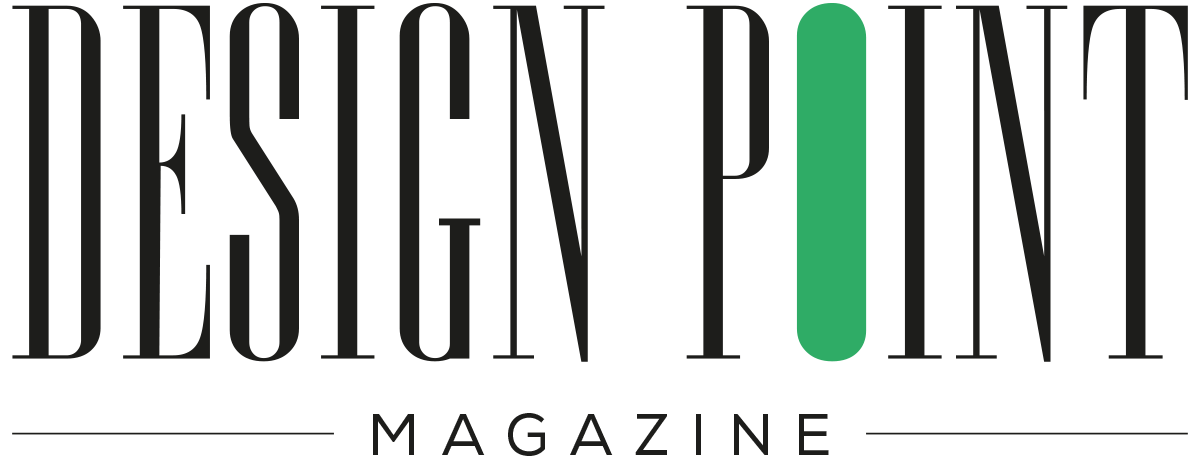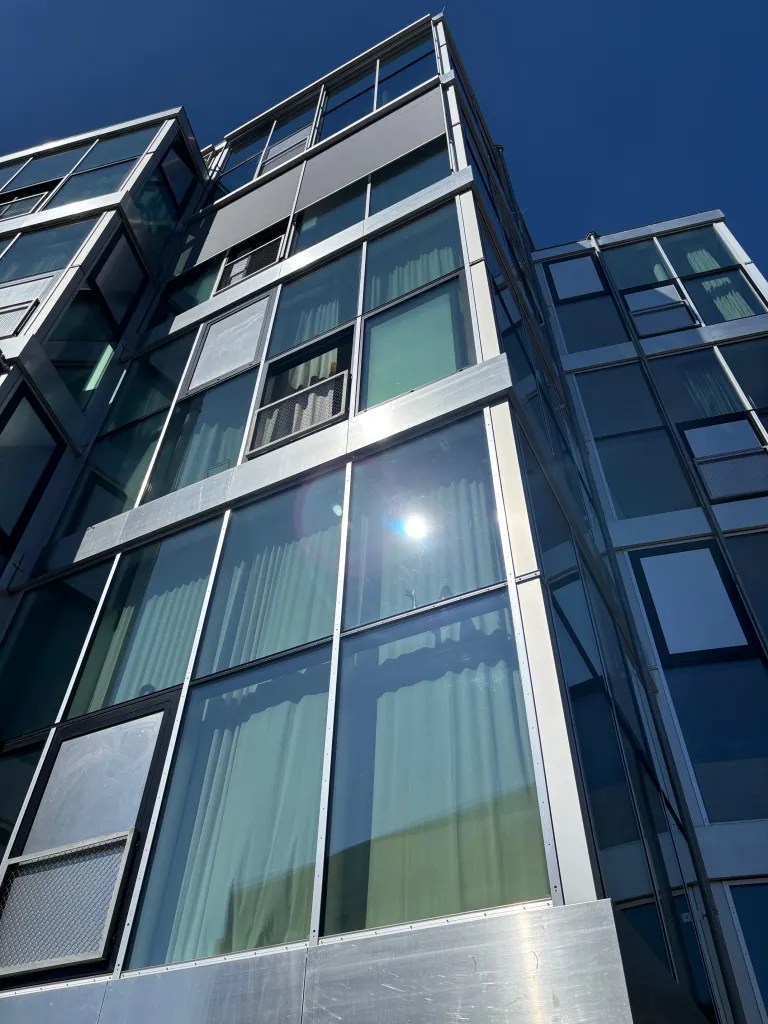The iF Design Awards and Trend Conference returned to Berlin this year, a city shaped by resistance, regeneration, and creative experimentation. I was excited to celebrate the award winners and witness how design is evolving in a time of cultural challenges and global upheaval. The weekend also included opportunities to reflect on design’s deeper role in shaping our shared cultural and social realities, alongside rapid technological changes. Design wasn’t just on display—it was there for us to question, challenge, and recalibrate.
Community emerged as a defining theme. As part of a global media contingent, I had many conversations with other publishers, writers, and editors about the importance of design journalism and how the design community can serve as a bridge between culture and commerce, especially as governments wage an all-out assault on critical thinking, creative reasoning, and the arts.
My experience in Berlin gave me opportunities to meet local product designers and architects, celebrate award-winning design, and hear from design leaders about the topics and trends that define our industry today.
Community as a Design Movement
The team from iF invited us to meet local product designers and architects who have absorbed Berlin’s energy and openness, and let it shape their work. These creatives didn’t only design objects or spaces; they built community into the core of their process. That spirit wove through every conversation, presentation, and project.
We visited the building community Kurfürstenstrasse (pictured below), designed by Johanna Meyer-Grohbrügge and Sam Chermayeff, who gave us a tour. The building, he explained, was developed by a community of private individuals who joined together to purchase the land and construct the building. A mix of apartments and some work spaces, each unit varies in size with windows facing both the public street and the private courtyard.
As a veteran of NYC co-op living, I was curious about the rules and regulations they have for residents. “We focus on what everyone can do, versus what they can’t,” Chermayeff responded. His statement resonated with me as I reflected on the vibe of Berlin and the iF event overall.
Celebrating Vision and Impact — The Awards
The celebration of the Gold Awards winners was held at Friedrichstadt-Palast in Berlin. The venue’s rich history and striking architecture provided a fitting backdrop for a fun, thoughtful, and well-executed event.
The 75 Gold winners were presented by iF CEO Uwe Cremering to an audience of almost 2,000. Across categories—visual communication, product, UX, architecture, and beyond—the winners all shared a common thread: they were well-designed and well-considered. Some favorites (below) were projects focused on building community for customers, supporting inclusivity, and addressing social and environmental challenges.
DRAM5 Whisky Packaging
This innovative packaging design turns a DRAM5 whisky-tasting experience into a social, interactive activity. The packaging, designed by Etherway Studio and NeueForm (both out of California), combines eco-friendly materials with a fashionable, vibrant aesthetic.
The Group Typeface for Volkswagen Group
The Group is a custom typeface family that serves VW’s diverse global markets and supports over 200 languages worldwide. The sleek, neo-grotesque typeface, designed by Berlin’s Studio René Bieder as part of the new visual identity created by Hamburg’s Landor GmbH, represents the customer-facing brand and inspires a new sense of corporate unity and motivation.
B-Reader Text-to-Braille Translator
The B-Reader is an interactive translation machine that converts book text into Braille. Designed by Dalian Minzu University, College of Design, Dalian, China, and Shenzhen C60Design Co., Ltd., Shenzhen, China, the reader can automatically recognize text through scanning technology when placed on an A4-sized or larger book and convert it into Braille.
Interactive Web App & Toolbox for coffee&climate
This interactive project, designed by Hamburg’s Melting Experience GmbH, provides educational resources about climate-resilient coffee cultivation to coffee farmers facing the direct effects of climate change via an easy-to-use progressive web app toolbox. The modern design offers intuitive and accessible navigation, and the content provides helpful tools for farmers in a digital format, a first for smallholder coffee farmers.
The 2025 Gold winners didn’t chase trends—they challenged them. From household products, furniture, healthcare, and visual communications, the winners seemed to operate on the belief that design’s purpose is not to seduce, but to serve. They leaned into real-world challenges, bringing clarity, structure, and humanity.
Innovation Meets Responsibility —The Trend Conference
iF celebrates innovation, but the word’s definition shifted during the Trend Conference at the weekend’s close. The meaning continues to shift, as the design community not only marvels at what’s new (although a lot of what’s new is exciting), but also questions what innovation should mean.
With technology evolving faster than our frameworks for ethics and responsibility, we can’t afford to innovate unquestioningly. The conversations around AI were particularly striking. The presenters, including Shane Griffin, the creative force behind Grif Studio (a PRINT New Visual Artist from 2015), discussed how new technology and AI can speed up the process and allow for creative exploration.
Griffin demonstrated how he has engaged with various industries to craft artwork, film, and physical products using 3D as a first principle and how AI can effectively support that process.
Shane Griffin, director and visual artist at Grif Studio, Miami
There was also a throughline of concern over how generative AI could dilute authorship, flatten creativity, and push aside the human element of design, alongside an unmistakable push to reclaim AI as a tool—one that serves us, not replaces us.
Martha Tsigkari, who heads up the Applied R+D research group at Foster + Partners, spoke about how disruptive technologies like AI could redefine the way we work.
We live in exciting times and I believe we need to seize this moment of exponential acceleration. The stakes are too high not to take an active role in determining the effective and informed use and impact of disruptive technologies.
Martha Tsigkari
Martha Tsigkari, senior partner and head of the Applied R+D (Applied Research + Development) at Foster + Partners, an interdisciplinary group of engineers, architects, and computer scientists solving complex design problems
Immersed in the culture of a city that played a central role on the global stage in the 20th century — World War I, Hitler’s rise to power and the tragedy of the holocaust, as the wall-builder on the Cold War’s front line — I couldn’t help but make comparisons with my own government’s reckless leadership. It was tough not to view everything through that lens. But the weekend of meaningful conversations, design exploration, and creative celebration orchestrated by the iF team also highlighted Berlin’s (and her creative residents’) ability to learn from the past to embrace the present and imagine the future.
By the end of the event, one thing was clear: in the face of rising authoritarianism, algorithmic sameness, and fragmented cultures, design can reinforce community as a form of soft power. It’s how we can help fortify democracy, challenge oppressive regimes, question technology, and nurture empathy in an increasingly polarized world.
As Sam Chermayeff reminded me, we must focus on what we can do, versus what we can’t. Design isn’t just what we make. It’s what we make possible.
The post Design as Dialogue at the 2025 iF Awards and Trend Conference appeared first on PRINT Magazine.

